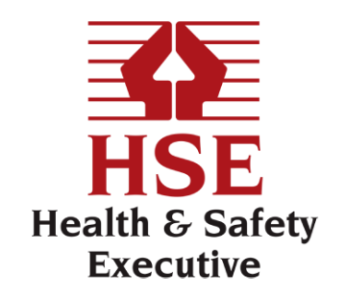HSE 5-Step Risk Assessment Method
As a security officer, you are not only protecting people and property — you’re also protecting safety. The Health and Safety Executive (HSE) sets out a clear 5-step method for risk assessments. While employers have the legal duty to carry them out, your role on the ground is vital in spotting hazards, reporting them, and ensuring safe systems of work are followed.
Slips, trips and falls are one of the leading causes of workplace injuries in the UK, accounting for over 30% of major injuries reported to the HSE each year. Understanding the risk assessment process helps you prevent accidents, keep sites compliant, and protect your SIA licence.

Step 1: Identify Hazards
This means looking for anything that could cause harm. For security officers, that often includes:
Wet or slippery floors near entrances.
Cables trailing across walkways.
Obstructed fire exits.
Poor lighting in stairwells or car parks.
Tip: Think like an inspector during patrols. Ask yourself: “If I was a visitor, where could I slip, trip or fall here?”
Step 2: Decide Who Might Be Harmed and How
Different people face different risks:
Visitors may not be familiar with the site and could easily trip.
Colleagues and contractors may be carrying equipment or rushing, making slips more likely.
You, the officer, could also be at risk during long shifts in varied conditions.
Tip: Consider vulnerable groups — for example, elderly visitors are more likely to suffer serious injury from falls.
Step 3: Evaluate the Risks and Decide on Precautions
Once hazards are identified, think about how to control them:
Place signage for wet floors.
Ensure mats are secure at entrances.
Keep walkways clear of bags and clutter.
Report faulty lighting immediately.
This is where BSI Codes (like BS 7499 on guarding practices) and NSI Guarding Gold standards come into play, requiring officers to take proactive steps in hazard management.
Tip: Always ask yourself: “Is there more we can do to reduce this risk?”
Step 4: Record Findings and Take Action
Employers must record significant risks, but as a security officer you can support this by:
Logging hazards in daily occurrence books (DOBs) or electronic systems.
Reporting issues promptly to supervisors or facilities teams.
Following up if you see no action taken.
This documentation is vital for compliance with HSE expectations and shows that you are meeting your SIA duty of professionalism.
Tip: If it’s not written down, it’s as if it never happened. Always record your actions.
Step 5: Review and Update
Risk assessments are not “one and done”. Conditions change — weather, building use, staffing levels.
Re-check areas after rain, snow, or spillages.
Confirm that reported hazards have been fixed.
Raise new risks as soon as you spot them.
Tip: Think of risk assessments as “living documents” — they only work if updated.
Real-World Example – Shopping Centre Entrance
It’s a rainy Saturday at a shopping centre. Shoppers are rushing in, floors are wet, and a family with small children is about to enter.
Hazard: Slippery floor at entrance.
Who is at risk: Customers (especially children), staff, and you.
Precaution: You place a warning sign, radio cleaning staff, and monitor until safe.
Action recorded: You log the hazard and your actions in the daily record.
Review: You later check the area again — dry and safe.
Outcome: No accidents, site remains compliant, and you demonstrate professionalism.
What Happens If Risk Assessments Are Ignored?
Employers pay the price: Failing to act can lead to heavy HSE fines, costly legal claims, and a damaged reputation that’s hard to rebuild.
Officers lose out too: Overlooking hazards could put your SIA licence at risk, damage the trust of your employer or client, and even lead to disciplinary action.
The public suffers most: Slips and trips mean painful injuries, time off work, and shaken confidence that the site is a safe place to visit.
Remember: Ignoring risks doesn’t just cause accidents — it damages businesses, careers, and people’s lives.
Key Takeaways for Security Officers
Risk assessment isn’t red tape — it’s the foundation of accident prevention.
You’re the site’s frontline sensors — spotting hazards as they happen.
Small actions make a big impact — putting out a sign, filing a report, or logging an incident keeps you compliant and others safe.
Professionalism is proactive — preventing accidents is what separates good officers from great ones.
Final Tip: Each time you apply the HSE 5-step method, you’re not just ticking boxes — you’re safeguarding people, protecting your licence, and proving your value as a professional security officer.

